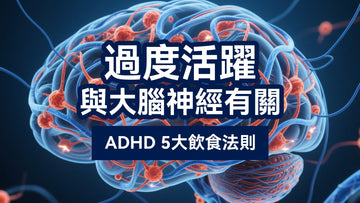WHC uses top-grade rTG form - the king of fish oil absorption rate

WHC uses the top rTG form - the king of fish oil absorption rate
Fish oil mainly contains Omega-3 DHA and EPA, which are important fatty acids that cannot be synthesized by the human body. High-concentration fish oil is important for physiological functions.
Modern people eat out frequently and have an unbalanced diet, so it is difficult for them to get enough Omega-3 from food in a stable and long-term manner. Therefore, high-purity and easy-to-eat deep-sea fish oil health foods have become an alternative for supplementing Omega-3.
The higher the purity, the fewer impurities it contains and the better the body's absorption effect. On the contrary, long-term use of low-purity fish oil will not only fail to effectively protect cardiovascular health, but may increase the burden on the body. Therefore, you need to pay attention to the purity of Omega-3 when choosing.
The types of fish oil currently available on the market often depend on the different extraction methods. Generally speaking, they can be divided into three types: TG type, EE type and rTG type. They are described below:
TG fish oil (Triglyceride form)
TG fish oil is the most traditional fish oil extraction method. Natural fish fat mainly exists in the form of triglycerides. TG fish oil is extracted from the subcutaneous fat of fish. It undergoes a basic refining process (including deodorization and solvent separation) to maintain the triglyceride form of fish oil as much as possible. Therefore, it is the closest to natural fish oil among the three types of fish oil.
However, compared to the other two types of fish oil, the disadvantage of TG fish oil is that it has the lowest Omega-3 content, generally about 30~50%, has the least processing steps, and is usually the lowest price.
EE type fish oil (Ethyl Ester Form)
Due to the low content of TG fish oil, in order to increase the content of Omega-3 fatty acids in fish oil, the market usually uses esterification technology to separate the polyunsaturated fatty acids in the fish oil to achieve the purpose of concentration.
The Omega-3 content in EE type fish oil is about 50~70%. Due to the complex extraction technology, the price is higher. However, because EE type fish oil is not in the triglyceride form of natural fish oil, it is not compatible with the human body. Although the content is higher, the absorption rate is poor.
rTG fish oil (Re-esterified Triglyceride)
rTG fish oil is an advanced version of EE fish oil. It uses more advanced extraction technology, such as supercritical extraction and gas, so it can better preserve the nutritional value of fish oil. However, due to the high technical threshold, the purity and price of rTG fish oil are relatively high. Most of the fish oils on the market that claim to have a fish oil content of more than 80% are rTG fish oil. Its content or absorption rate is also the highest, and the highest purity Omega-3 fish oil is WHC.
Experiments show that rTG fish oil is the most compatible and easily absorbed form by the human body: https://tinyurl.com/yywr7d22
There are two main points to consider when choosing fish oil:
- Are the raw materials from pure fisheries: Is there no nuclear pollution or oil mining around the fisheries? Are deep-sea fish rich in DHA and EPA selected to reduce the accumulation of toxins in the food chain and avoid heavy metal pollution caused by the food chain?
- Pass international standards and various tests: Has it passed various heavy metal tests? Has it been certified by international organizations?
Take WHC fish oil as an example. Its raw materials are small deep-sea fish from South America at extremely high latitudes. Each batch is sent to IFOS for testing and has obtained 5-star certification, ensuring that all test items in the fish oil pass the standard requirements. In addition, WHC fish oil pills have also obtained certifications such as Friend of the Sea, GMP, GOED and Pesco Vegan, making it a reliable choice.
The brand has passed the Consumer Council's standards for 2 toxicant tests
In addition, according to the report of the Consumer Council, the brand also tested two of the pollutants, including 3-MCPD and propylene oxide (GEs). Among them, 3-MCPD is a pollutant produced during the processing of Omega-3 fish oil products. The test results show that WHC's fish oil is only 560μg/kg, which is far below the EU standard of <2500 μg/kg. Another pollutant, GEs, is produced during the high-temperature purification process. WHC's fish oil uses low-temperature cold extraction technology, so it will not produce GEs, which is absolutely guaranteed.
References:
Latest IFOS Report for WHC UnoCardio 1000 + Vitamin D 1000 #Laidlaw M, Cockerline CA, Rowe WJ. A randomized clinical trial to determine the efficacy of manufacturers' recommended doses of omega-3 fatty acids from different sources in facilitating cardiovascular disease risk reduction. Lipids Health Dis. 2014 Jun 21; 13:99. dpi: 10.1186/1476-5X-13-99. PMID: 24952576; PMCID: PMC4085663

No comments






